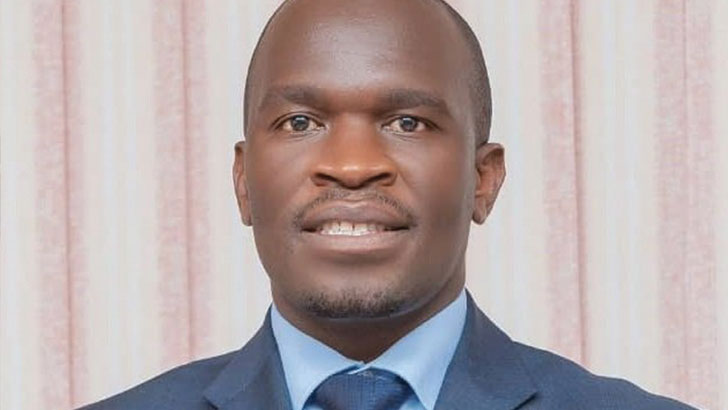Our Staff Reporter JOHN CHIRWA tracks Malawi’s grand dream of irrigating 220 000 hectares by 2035, according to the National Irrigation Master Plan and Investment Framework.
Mafinga Hills in Chisenga, about 25 kilometres on the way from Chitipa Town to Wenya, is a lifeline for many farmers.
From the hills runs Chisenga, a perennial river that meanders through a 106-hectare (ha) valley.
Since time immemorial, local farmers have depended on the river to grow both food and cash crops three times a year.
But this may soon become history as the river often runs dry in summer due to climate crisis.
“Water has become scarce due to erratic rainfall pattern, so the river no longer serves farmers at the end of the valley,” laments Matthias Kanyika.
The farmer grows maize, beans and Irish potatoes on the banks of Chisenga.
To avert the looming crisis, government is constructing an irrigation scheme to tap and dam water for dry months.
The project involves construction of a water intake, reservoirs and concrete canals to supply the fields, roads and an office block.
Similar engineering works are also underway in the neighbouring Traditional Authority Mwaulambya in Chitipa along the boundary between Malawi and Tanzania.
The two irrigation schemes worth K6.1 billion are part of the $80.4 million Programme for Rural Irrigation Development (Pride) funded by International Fund for Agricultural Development (Ifad).
The Ministry of Agriculture is expected construct 16 schemes in 12 districts. These include Karonga, Rumphi, Nkhata Bay, Mzimba, Dowa, Nkhotakota, Balaka, Machinga, Zomba, Chiradzulu and Phalombe.
If completed, Kanyika’s emerging scheme is expected to help 400 households more than double their yield from 80 tonnes to 200 tonnes per harvest.
“Most of our land remained idle due to scarcity of water,” he says.
According to Pride communications specialist Felix Malamula, the project seeks to bridge the gap by developing 5 400ha of irrigated land and 12 300ha of rain-fed farmland for the benefit 19 500 households and 950 000 people. The beneficiaries mostly include households in poverty, women-headed households, the youth and persons with disabilities.
“Our goal is to contribute to the resilience of smallholder communities and reduce vulnerability to food insecurity, climate change effects and market disparities,” says Malamula.
Construction at Mafinga started in June this year, but contractors say half of the works have already been completed. They hope to finish by May next year.
“We are way ahead of schedule in this one-year project,” brags Primo-Pabe Contractors resident engineer Master Chirwa.
Karonga Agricultural Development Division (Kradd) chief irrigation officer John Bvutula is satisfied with progress as both schemes are 50 percent complete, including the intakes.
“As government, we challenged them to complete major works before the first rains and they have beaten the target,” he says.
This is part of the vision to irrigate 220 000 hectares by 2035, according to the National Irrigation Master Plan and Investment Framework.
The government’s flagship projects include the Shire Valley Transformation Programme under construction to irrigate 43 370ha using water from Kapichira Falls on Shire River and conveying it by gravity through canals to irrigable crop fields in Chikwawa and Nsanje. The other is the modernisation of Bwanje Valley Irrigation Dam, which waters an 800ha irrigation scheme around it.
Agriculture researcher Luxon Nhamo conducted a study on the impact of investing in smallholder irrigation schemes on crop productivity in Malawi.
He says climate change poses a huge risk and setback for farmers in developing countries.
He reports: “Agriculture in sub-Saharan Africa is dominated by smallholder farmers who depend mainly on rain-fed agriculture, putting food security at both household and national levels at risk, especially in the event of drought.
“Investment in smallholder irrigation becomes a priority in developing countries if food security and national development goals are to be met, as their economies are agro-based,”
Bvutula says in Karonga and Chitipa, most farmers still depend on rain-fed agriculture, but this is no longer sustainable with the climate crisis. For them, he says, irrigation constitutes a viable escape from dry spells, drought and dwindling harvests.
“These days, it’s either we receive too much or too little rains. With irrigation farming, farmers will be harvesting more and up to three times a year. This will also help them boost their livelihoods and income,” he says.n
NEXT: Water covers about 21 percent of Malawi’s territory, but to what extent is the country ultilising this endowment for irrigation so that its citizens do not starve in the middle of plenty?
The post Irrigating dry fields amid climate change appeared first on The Nation Online.
 Moni Malawi
Moni Malawi 
